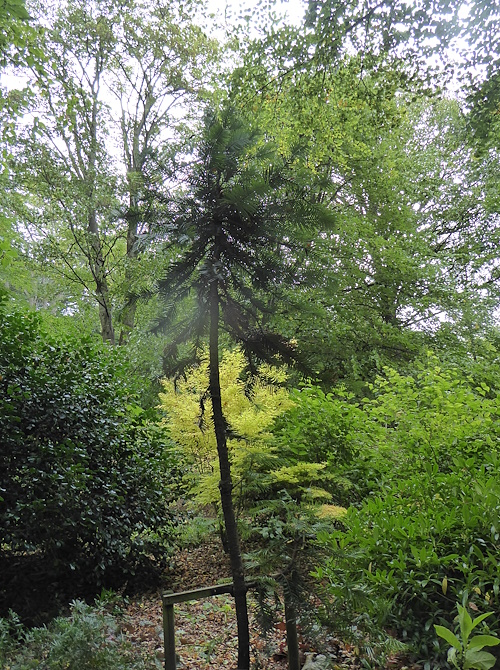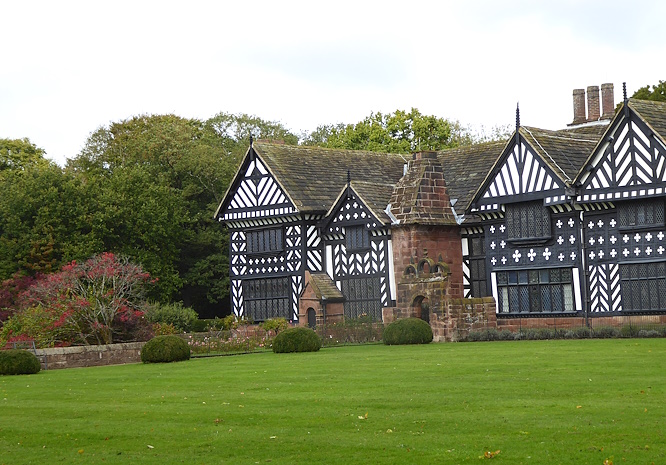
Speke Hall is a National Trust property, south of Liverpool, adjacent to the airport. It is a rare surviving Tudor timber-framed manor house, started in 1530 and restored in the 19th century. It was home to the devoutly Catholic Norris family, who were subject to fines and other legal penalties after Henry VIII broke with Rome. They kept a resident Catholic priest, and his secret hiding place known as a “priest hole“ still survives. The Hall’s upkeep was financed by the Norris family, and later by the Watt family, through their longstanding involvement in transatlantic slavery.
Another black mark against the Hall from our point of view is how difficult it is for pedestrians to get there. It’s a very long walk from the nearest bus stop, almost a mile down the long driveway. There is no proper footpath so we either had to walk on the grass verge or take our chances on the edge of the road.
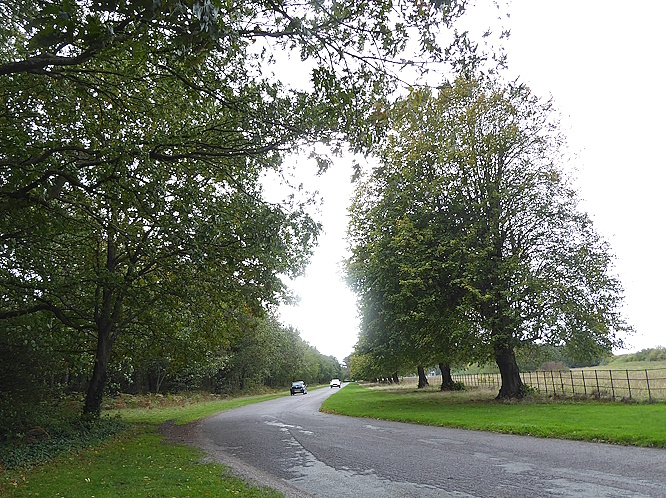
Happily, John had some spare passes so we didn’t need to pay the entrance fee of £15.40. We were free to wander the grounds and the old orchard. There were plenty of windfall apples which had come down in Storm Amy and the old kitchen garden was still productive.
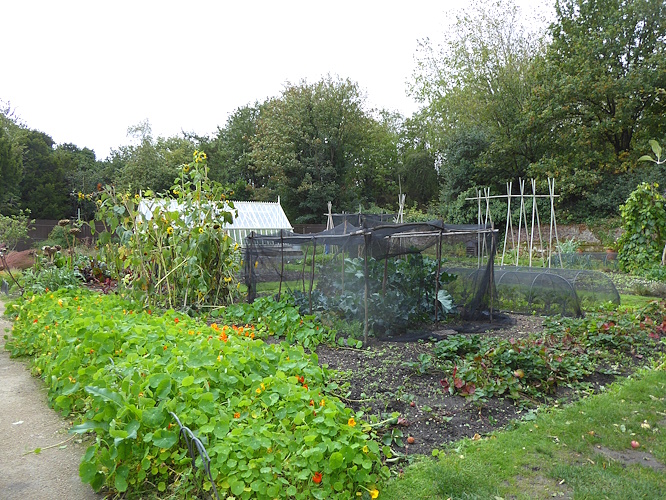
There were Magpies, Crows and Wood Pigeons around the trees and Jackdaws on the house roof, as well as a couple of Pied Wagtails. We spotted a Blackbird on a path and some Long-tailed Tits on the airport fence. A Heron flew over. Some flowers were still blooming in the verges and we noticed this bee foraging in a purple Michaelmas Daisy.
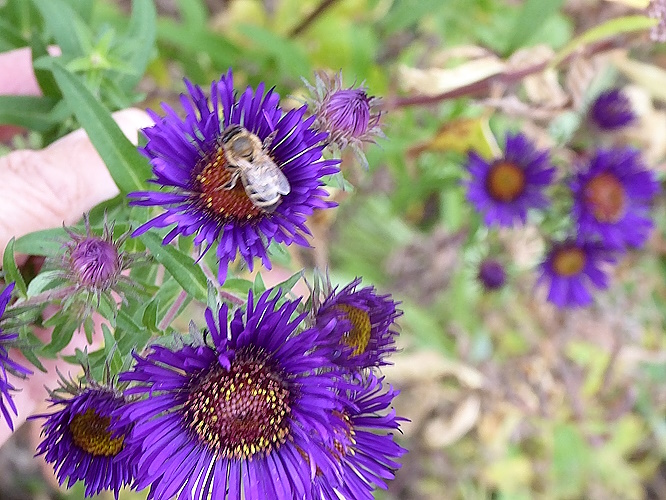
In the woods is the so-called Secret Garden, and there is supposed to be a rare Wollemi Pine there. So there was. It’s in quite a shady area so it isn’t flourishing as well as the ones at Princes Park and Ness Gardens.
On a bank around the back of the house there were some yellow flowers that looked like Crocuses. Too early for them, surely? My friend Google reveals there is such a thing as a Yellow Autumn Crocus, Sternbergia lutea, also known as the winter daffodil, autumn daffodil or lily-of-the-field. Its leaves and yellow flowers appear in autumn. That’s what it must be.
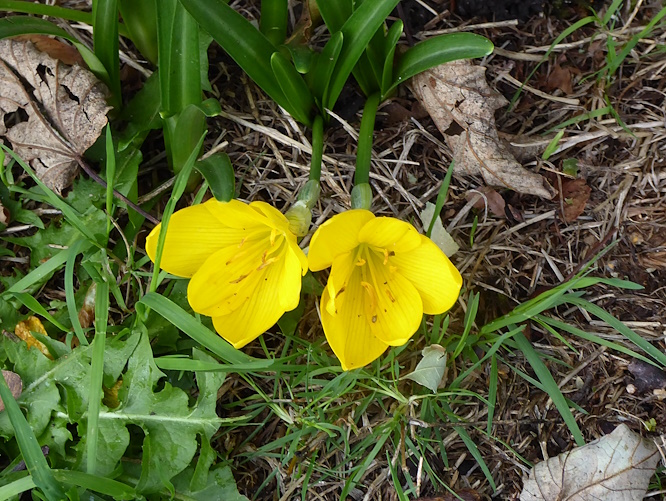
Nearby were some flowers of the better-known Autumn Crocus, Crocus nudiflorus, with large, ghostly, purple flowers which emerge before the leaves.
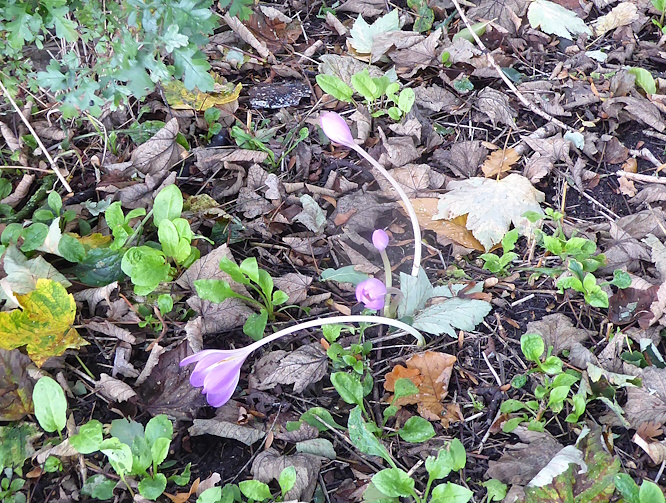
Also around the back were some very pretty Acers showing off their autumn colours, and a Paperbark Maple, Acer trifolium, with peeling red bark and very untypical three-lobed leaves.
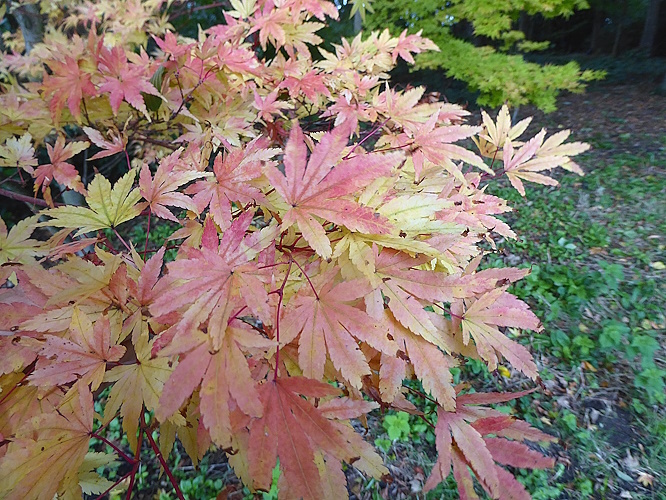
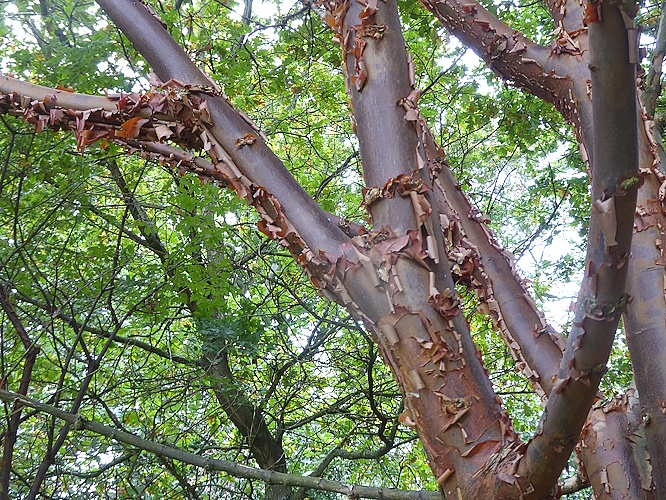
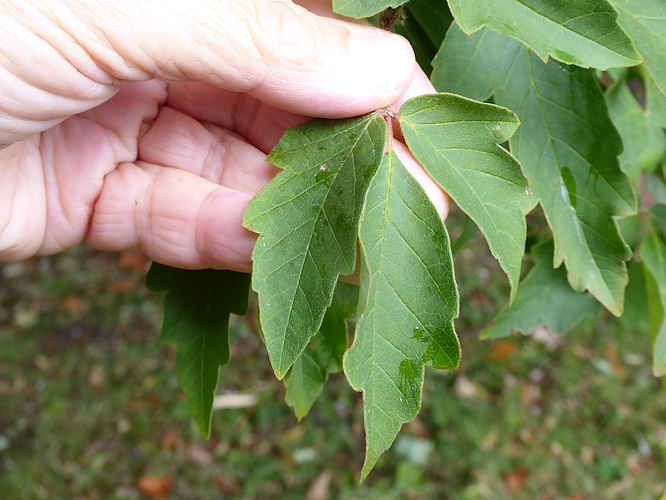
We are familiar with the bright red nail galls on some Lime tree leaves, caused by the gall mite Eriophyes tiliae. However, the ones we saw were white and slightly fluffy. Many images online show these white ones but no explanation is given.
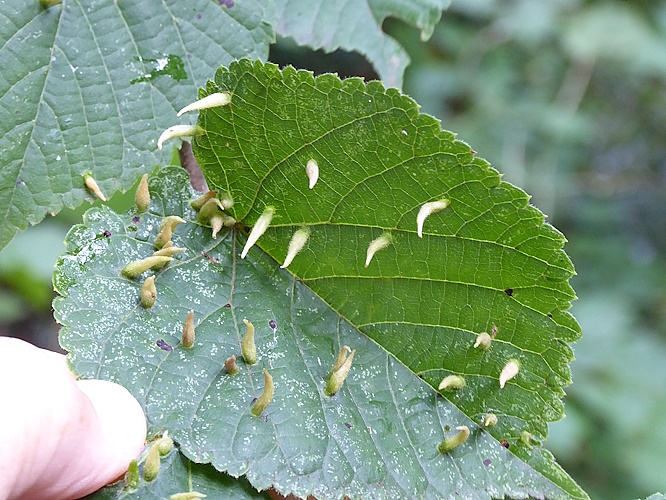
There is a Woodland Trail for the kids, based on the legend of the giant called the “Childe of Hale”. He lived in the nearby village of Hale around the year 1600 and was said to have been 9 foot 3 inches tall. This trail reproduces his cottage, where he is said to have slept with his feet out of the windows. As people pass, a sensor triggers a speaker, and the sleeping giant snores!
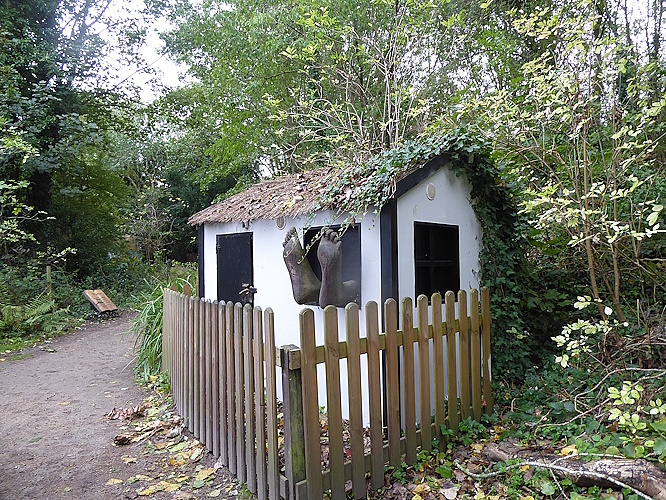
Public transport details: Bus 86A from Elliot Street at 10.02, arriving Speke Hall Avenue / Cartwright’s Farm Road at 10.50. Returned on bus 86A from Speke Hall Avenue / Estuary Banks at 2.40, arriving Liverpool 3.30.

